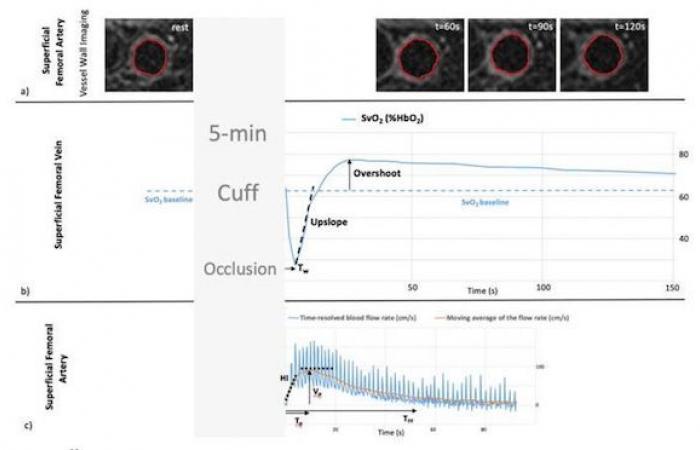Opinions are divided as to the relative dangerousness of vaping, involving nicotine or not. An American study presented at RSNA 2024 measures blood flow in the femoral artery after inhalation with an e-cigarette or tobacco cigarette. This work shows that regular vaping can cause vascular pathologies in the medium term.
Researchers identified acute effects of smoking and e-cigarettes on vascular function, even without nicotine. Results of the ongoing research will be presented next week at the annual meeting of the Radiological Society of North America (RSNA).
E-cigarettes, which heat a liquid to produce an aerosol inhaled into the lungs, contain far fewer chemicals and toxins than tobacco smoke. As a result, many believe they are less harmful than cigarettes. But, according to a study which will be presented at RSNA 2024they can nevertheless harm vascular function and general health.
Is vaping really harmless to your health?
« Electronic cigarettes have long been marketed as a safer alternative to regular smoking, notes the lead author of the study, Dr Marianne Nabbout, radiologist at the University of Arkansas for Medical Sciences in Little Rock (USA). Some believe that e-cigarettes contain none of the harmful products, such as free radicals, found in regular tobacco cigarettes because no combustion is involved. »
In the study conducted at the University of Pennsylvania, Dr. Nabbout and colleagues sought to identify the acute effects of smoking on vascular function and the immediate effects of vaping, with and without nicotine. A total of 31 healthy smokers and vapers aged 21 to 49 have been included to date.
American study measures blood flow in the femoral artery after inhalation
During three separate sessions, participants underwent two MRI scans, one before and one after each of the following smoking/vaping episodes: tobacco cigarette, e-cigarette aerosol with nicotine, and e-cigarette aerosol without nicotine. .
A cuff was placed on the upper thigh to restrict blood flow. Once deflated, artery flow velocity and venous oxygen saturation were assessed. Cerebrovascular reactivity was also measured by phase-contrast MRI. Data from smokers and vapers were then compared to baseline analyzes of 10 non-smokers and non-vapers aged 21 to 33.
Regular vaping can lead to vascular pathologies in the medium term
After inhalation of each type of vaping or smoking, there was a significant decrease in resting blood flow velocity in the superficial femoral artery. The decrease in vascular function was most pronounced after inhaling nicotine-containing e-cigarettes, followed by nicotine-free e-cigarettes. A decrease in venous saturation was also present in vapers, whether or not the e-cigarettes contained nicotine. This suggests an immediate decrease in oxygen uptake by the lungs after vaping.
« This study serves to highlight the acute effects that smoking and vaping can have on a multitude of vascular flows in the human body, concludes Nabbout. If the acute consumption of an e-cigarette can have an effect which manifests itself immediately at the level of the vessels, it is conceivable that chronic use could cause vascular diseases. »
Paolo Royan






